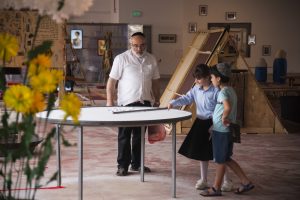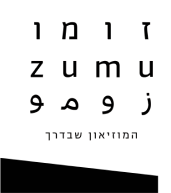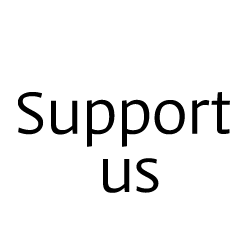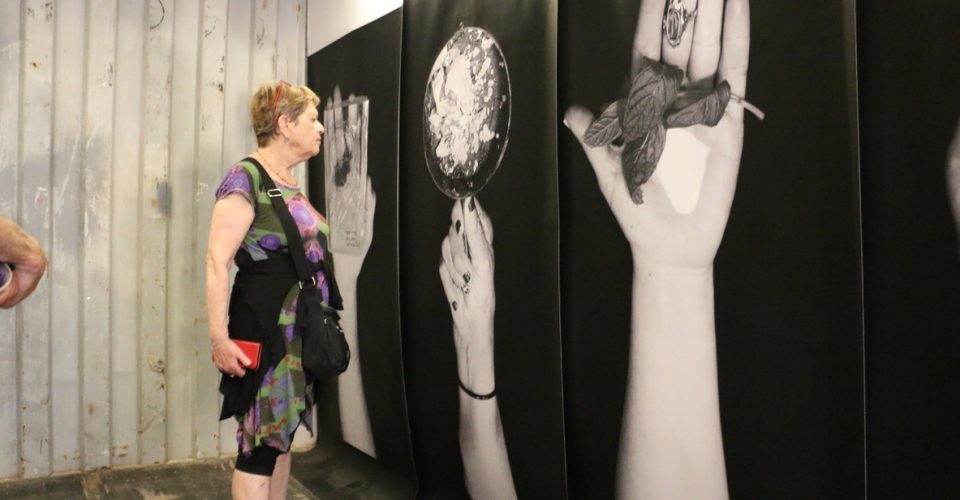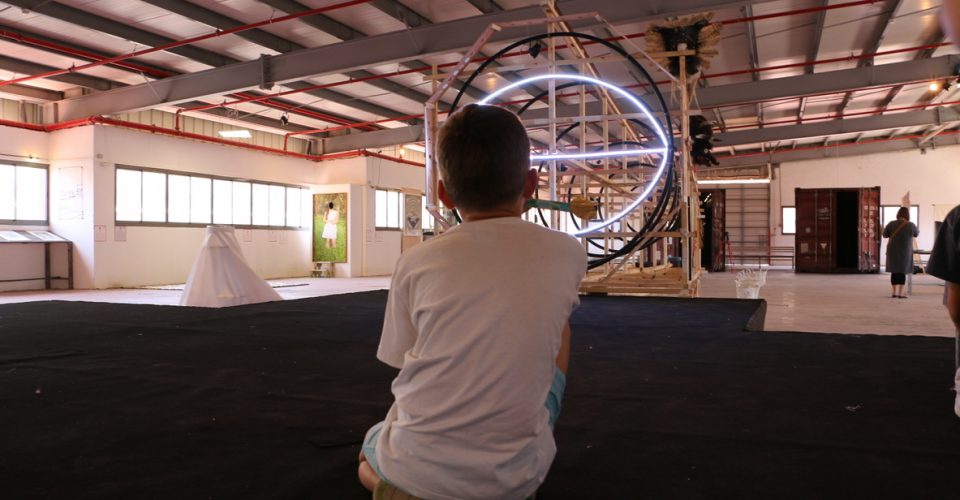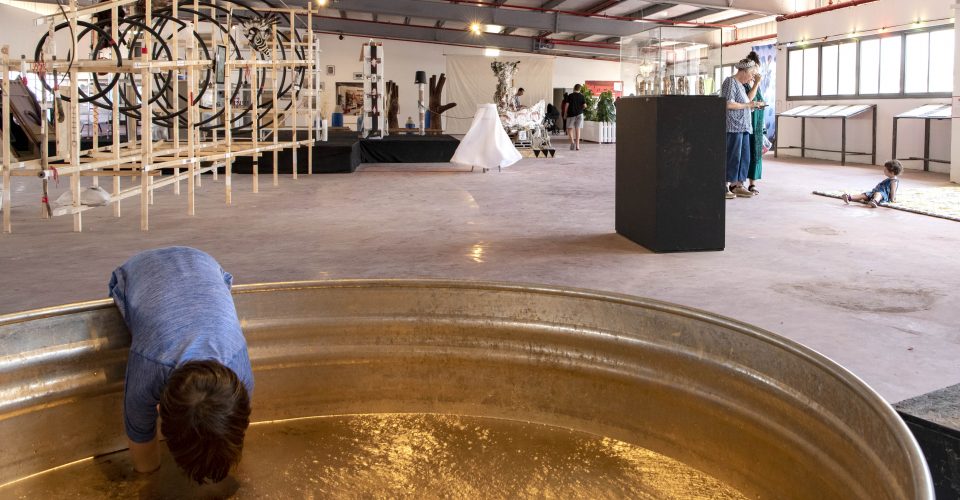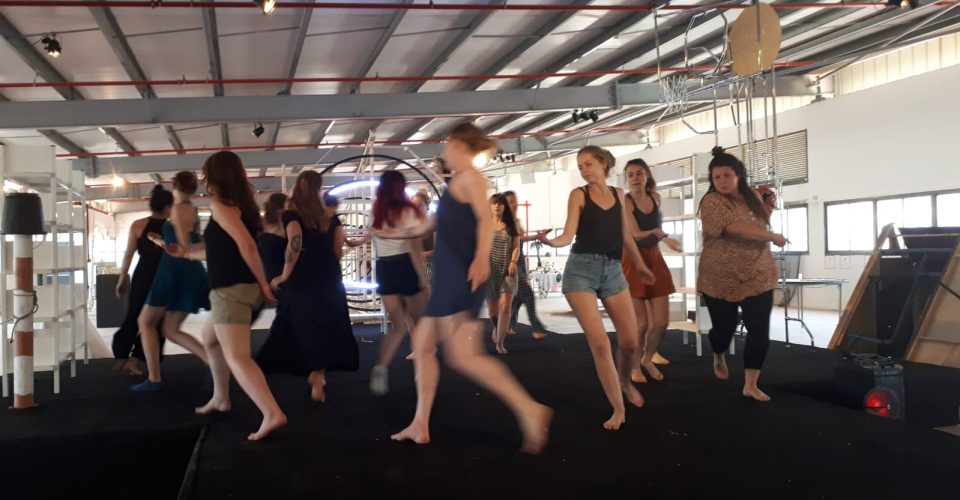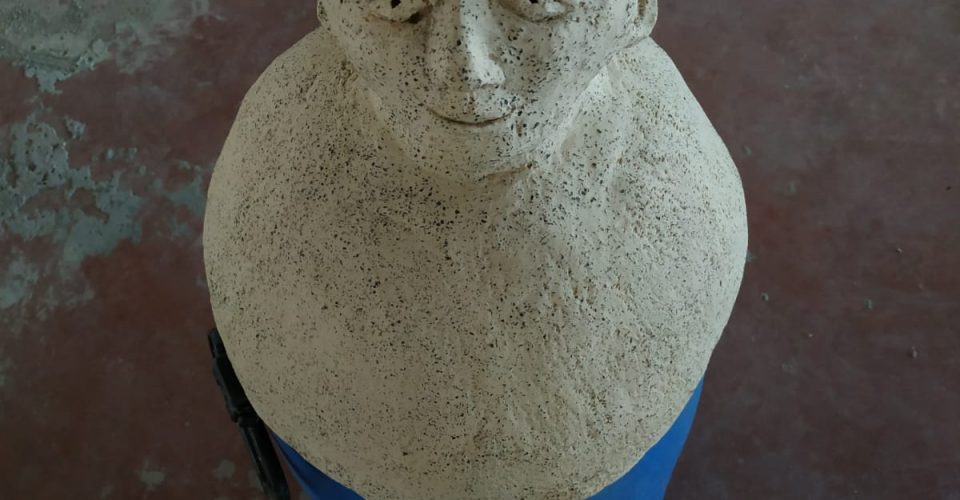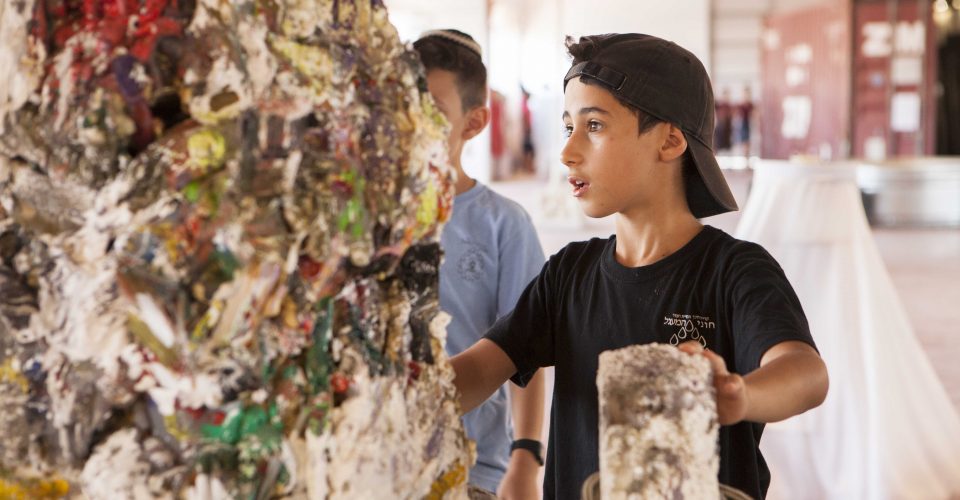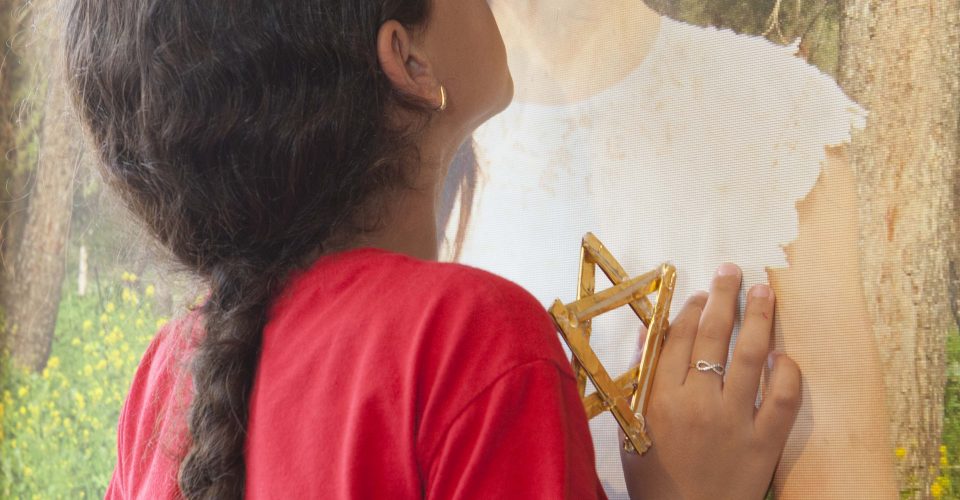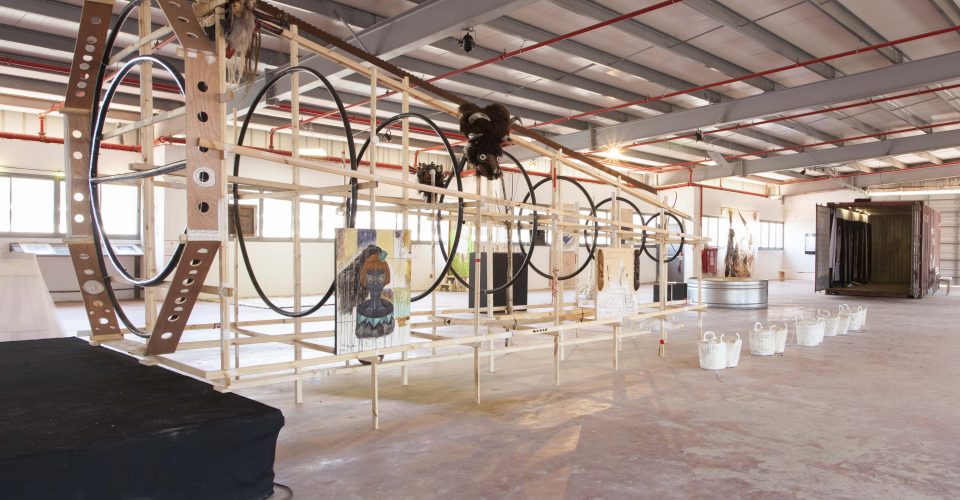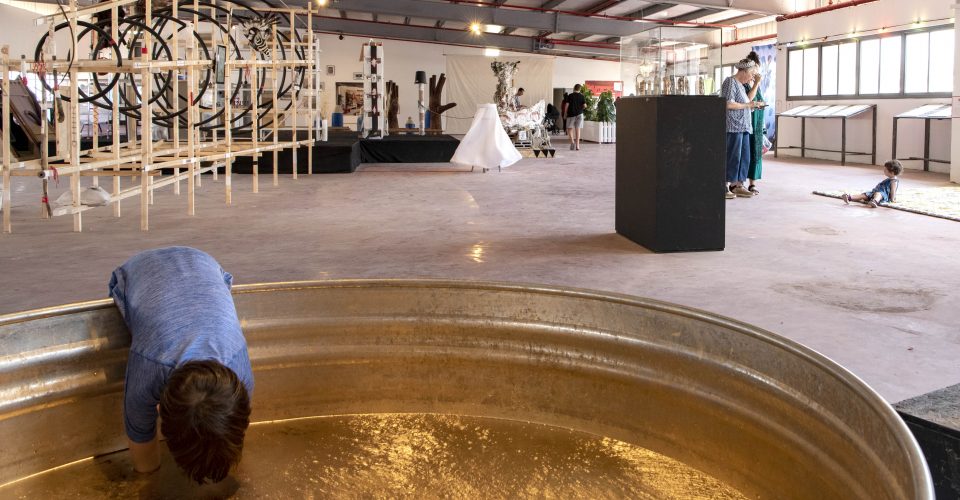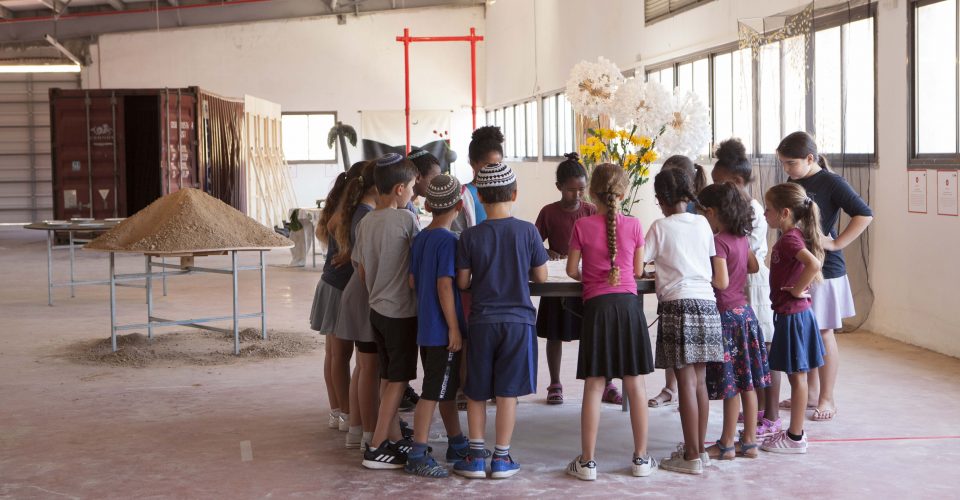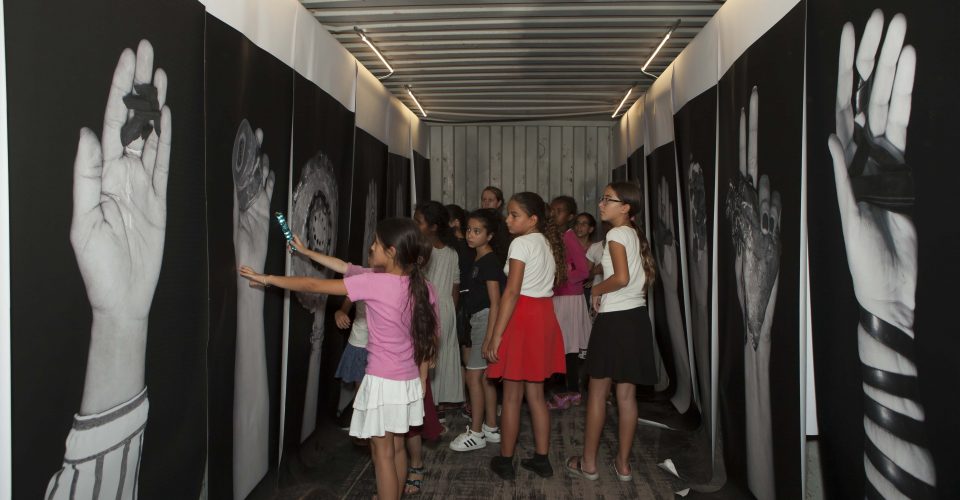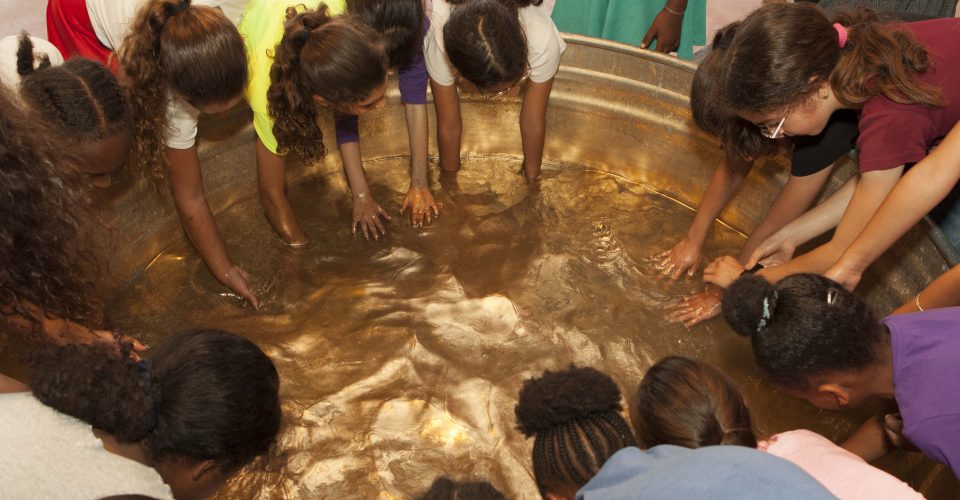In 2019, Zumu headed north, doubled its activities and transitioned to a bi-annual model. The first city on the list was Hatzor HaGlilit, which hosted us on the second floor of the MBC college in the city’s sleepy industrial area.
Many of the works featured in the exhibition invited the observer to touch, feel and create ceremonies and rituals, which, in turn, became a point of engagement for visitors and families from all over the north. Hatzor HaGlilit’s desire to be more than just a “transit point” was a key element of Zumu and turned the third venue into a vibrant cultural center.
The residency program in Hatzor HaGlilit pivoted around the residents’ attempts to endow the city with a new narrative, and the artworks they created for the exhibition explored artistic perspectives of tradition, heritage, a longing for change, and the open wounds of its population.
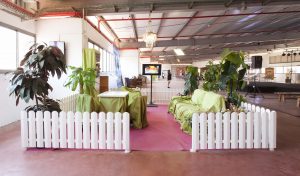
Zumu Hatzor HaGlilit hosted students from all of the schools in the city, surrounding settlements and Kibbutzim, which injected vibrancy into the venue and turned the industrial area into a cultural hub. Zumu’s new public program, which we ran for the first time in Hatzor HaGlilit, focused on local creativity, rather than small, imported events, and thus turned it into a platform for local creativity, challah and couscous evenings, communal study, singing sessions and multi-participant meetings focused on history, archeology and society.
